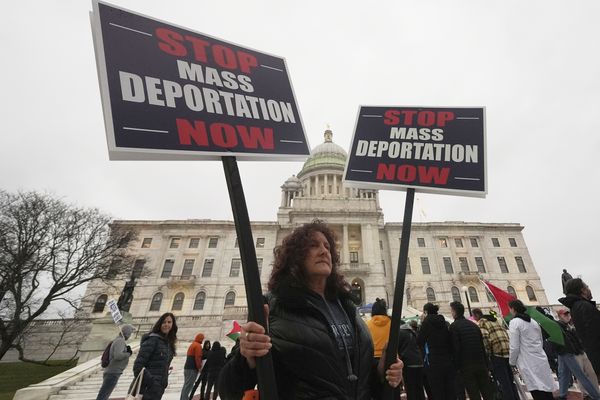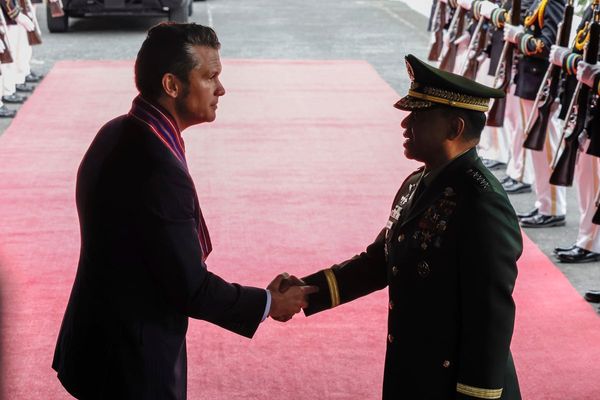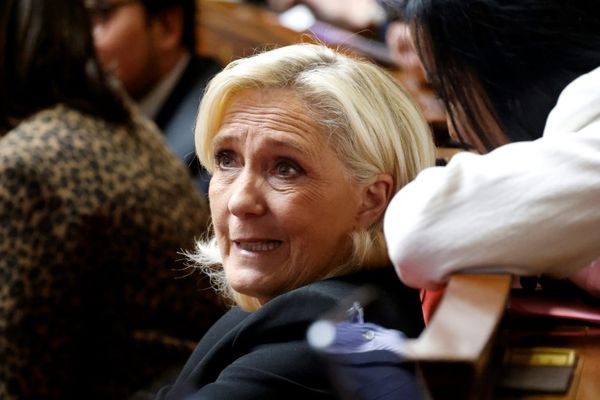
More than a century after he was killed fighting in World War I, an unidentified American soldier will be reburied on Wednesday at a military cemetery in northern France. Thousands of US servicemen who died in the conflict remain missing, but finding them is no easy task.
"There was a certain model of trench knife. There was American ammunition. There was a handle from an American canteen cup. A gas mask. Buttons off an American uniform."
According to Bert Caloud, superintendent of the Oise-Aisne American Cemetery, these were the first clues that remains unearthed last year belonged to one of around 54,000 US soldiers killed in action during World War I.
They had surfaced by chance in February 2022 in the village of Villers-sur-Fère, some 115 kilometres north-east of Paris, while a local undertaker was digging a plot in the local graveyard.
On Wednesday afternoon, they will be reburied at Oise-Aisne in the presence of top US and French military officers, in the cemetery's first funeral since 1932.
"To be able to find someone who died liberating this region from oppression and be able to hold an honourable – not simple, but elaborate – burial ceremony for him, it’s very significant out here in rural France. And an honour for us to do so," says Caloud.
Rare discovery
Such finds are rare, according to historian Ben Brands of the American Battle Monuments Commission (ABMC), the government agency responsible for US military cemeteries overseas.
The US only entered the war in April 1917, nearly three years after it started, and it would be another year before American troops joined the fighting, in the final months of the conflict.
"We were only in the war for about eight months of heavy combat ... So our numbers pale next to those of the French, the British, the Germans. The discovery of World War I remains is pretty unusual for us," Brands told RFI.
American soldiers killed in combat were typically buried near where they fell, resulting in thousands of temporary cemeteries and individual graves scattered across France and Belgium by the end of the war in November 1918.

Over the next few years, the US – which had never before sent soldiers abroad to defend another country – gathered up those remains, most of which were ultimately returned home at their next of kin's request. The rest were reburied, if their families wished, in a few specially created overseas cemeteries.
"By the end of that process, there’s still about 4,400 American soldiers that are missing," Brands says.
"Among that 4,400, there’s over 1,600 unknown remains – remains that America has recovered but has not been able to identify. If you do the math, that leaves around 2,800 that are still buried or laying where they fell in unknown graves."
Lone grave
Only "a handful" of those missing have been found over the past century, says Brands – 26 known soldiers since the early 1930s, and even fewer remains that can't be identified.
"To my knowledge, this will be only the second unknown we’ve recovered since the 1930s," he says.
Like most World War I recoveries, it was made by "happenchance", as cemetery superintendent Caloud puts it.
The undertaker who uncovered the remnants, a veteran of the French army himself, recognised the military insignia and contacted the authorities.
The partial remains were exhumed and a second excavation supervised by an archaeologist revealed a few more clues – a helmet, part of a military stretcher, bone fragments.

They weren't enough to identify the soldier, but they did allow Caloud and his ABMC colleagues to piece together some of the story.
Based on where he was found and accounts from the time, they believe he was one of the members of the US Army's 42nd Infantry Division who fought to push back advancing German troops just north of Villers-sur-Fère in late July 1918.
The division lost 6,000 men in around a month of fighting, including some 35 who were buried on the edge of the village. While the others were moved to military cemeteries after the armistice, for reasons no one knows, this soldier was left behind.
"He’s been lying there by himself for more than a hundred years," Caloud says.
Nameless remains
There's little chance now that he'll ever be identified.
While the US has agencies dedicated to tracking down and testing the remains of those killed in World War II and subsequent conflicts, for World War I "there is really no process for identifying unknowns", says Brands.
This week's ceremony is intended to show that the soldier won't be forgotten nonetheless.
Of 6,012 soldiers buried at Oise-Aisne, 597 are unidentified. Like each of them, this soldier won't have his name or rank on the white marble cross that marks his grave, but instead the inscription: "Here rests in honored glory an American soldier known but to God."

A French biplane will fly overhead, and the US Army's chief of staff, General James C. McConville, will give an address.
It's a world away from the simple burials most servicemen received overseas in the years immediately after World War I, notes Brands.
He says the military honours are symbolic: "America’s debt to its fallen and its commitment to its fallen is in perpetuity. I think it’s very powerful that he’s being brought home to lie next to his brothers in arms after all this time."
For Caloud, who led the year-long process of getting the army's authorisation to rebury the remains, the ceremony is even more personal.
"I was there when his bones were brought up," he says. "I'm elated that we can lay him to rest among soldiers that he fought with and not remain as skeletal remains in a laboratory somewhere."
He told RFI: "He's certainly earned this little piece of France that we’re going to put him in."







